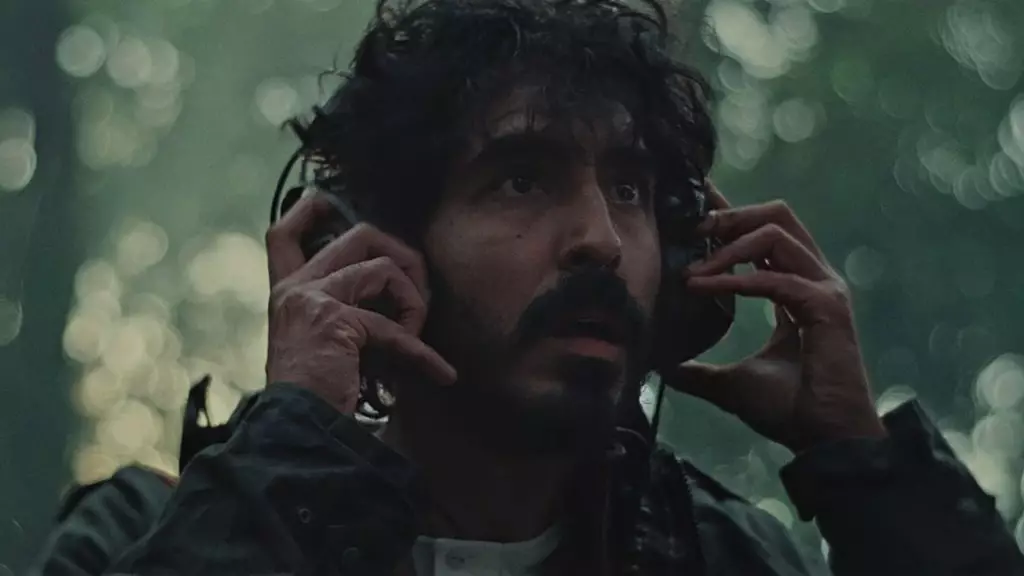“Rabbit Trap,” the feature debut of British writer-director Bryn Chaney, is an evocative exploration of sound and folklore woven into a psychological tapestry. Set against the backdrop of the Welsh countryside in 1973, the film presents a narrative that draws viewers into the lives of a musician couple, Darcy and Daphne, portrayed by Dev Patel and Rosy McEwen. Their attempt to compose their latest album soon spirals into an exploration of mysterious forces lurking just beyond their perception.
The Harmony of Sound and Silence
At its core, “Rabbit Trap” is a celebration of sound, cleverly juxtaposed with the profound silences that fill the spaces in between. Darcy’s fascination with capturing the essence of the surrounding woods quickly evolves from a creative pursuit to something more sinister. The articulation of sound as both a tangible medium and an ethereal presence serves as a recurring theme. Darcy proclaims, “sound is a ghost… and your body is the house it haunts,” emphasizing the visceral impact of audio on human emotion and memory.
In the film, sound operates almost as a character in its own right, carrying the weight of the couple’s hopes, fears, and the darkness they cannot articulate. The field recordings—dripping water, clanging metal, and crunching grass—invoke a surreal atmosphere, effectively immersing the audience in the characters’ internal and external strife. Oscar-nominated composer Lucrecia Dalt’s score intertwines seamlessly with Graham Reznick’s meticulous sound design, crafting an auditory experience that mirrors the chaos and ecstasy of Daphne’s creative evolution.
The couple’s intimacy and creative synergy is amplified through the film’s innovative use of sound. As their relationship deepens, so too does the complexity of their shared experiences. However, this journey into creativity is underscored by Darcy’s personal struggles—sleep paralysis and a haunting darkness that he must confront. When Daphne captures his dream talk, it reveals the unspoken fears lurking in the depths of his soul. Here, Chaney’s choice to utilize sound as a conduit for those hidden truths plays a vital role in their connection.
This interweaving of sound, trauma, and intimacy is masterfully conveyed through Patel and McEwen’s performances. Their palpable chemistry is both uplifting and weighed down by the shadows of their personal histories, creating a poignant tension that resonates throughout the film. As the film progresses, it becomes evident that while sound opens doors to creative realms, it also exposes vulnerability—the potential for self-discovery, but also the risk of entrapment in one’s past.
The arrival of a mysterious child, played by Jade Croot, shifts the dynamic yet again. This child’s introduction not only serves as a vessel for local folklore but also sheds light on hidden aspects of Darcy and Daphne’s personalities. Croot’s portrayal imbues the child with a mesmerizing quality that evokes both innocence and unease. The emotional interplay between the three characters adds depth to the narrative, as they navigate their creative processes and personal demons together.
The incorporation of folklore deepens the thematic richness of the film, presenting a lens through which the characters can reflect on their realities and fears. The child’s affinity for rabbit hunting, imbued with symbolism, suggests an exploration of mortality and the cyclical nature of creativity and despair. As the story unfolds, the relationship morphs into a delicate balance of parental instillation and creeping trepidation, pushing the narrative towards a powerful climax.
“Rabbit Trap” showcases Bryn Chaney’s ability to forge an atmospheric story where sound, emotion, and folklore are intricately connected. Patel’s involvement as a producer and actor further enriches this debut, offering a platform for Chaney’s imaginative vision. The film is not simply a tale of artistic struggle; it is an intimate exploration of vulnerability, trauma, and the communal nature of creative endeavors.
As audiences are drawn into this lyrical and haunting journey, “Rabbit Trap” reveals itself as a poignant commentary on the nature of sound, love, and the shadows that accompany artistic ambitions. Chaney stands poised as a notable new voice in film, adept at weaving psychological depth with visceral experience, making “Rabbit Trap” a must-see for cinephiles and casual viewers alike.

